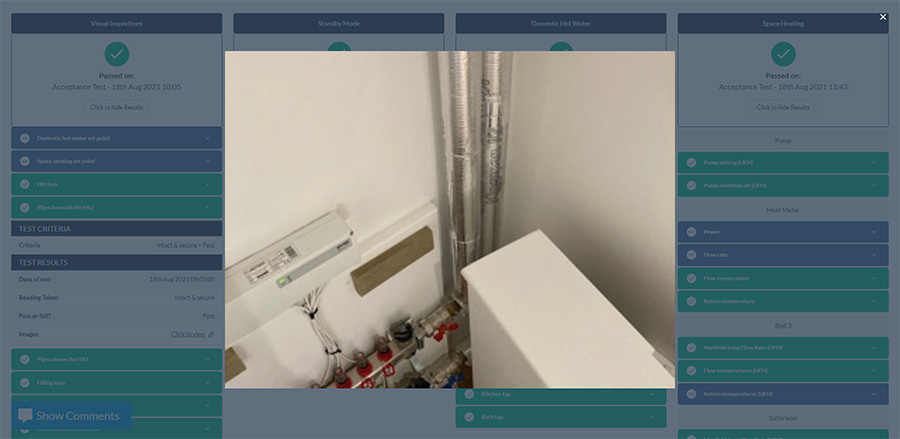1,000 TESTS COMPLETED
Guru Verify used to Acceptance Test heat networks across London
The ADE/CIBSE Heat Networks Code of Practice 2020 now includes minimum standards around independent Acceptance Testing. Heat network consultancy FairHeat have been using Guru Verify across a number of sites in the UK, including Equipment Works, The Lock at Greenford Quay and Stone Studios in London.
The increased level of transparency and accountability that Guru Verify enables means an increase in the effectiveness of the acceptance testing process and therefore better results. I don’t think it’s a coincidence that the sites that have been through the Guru Verify testing process are the sites which are the best performing out of the sites we’ve worked on recently.
Acceptance Testing Engineer, FairHeat
Equipment Works
337 DWELLINGS IN WALTHAMSTOW, LONDON
FairHeat used Guru Verify to Acceptance Test each dwelling:

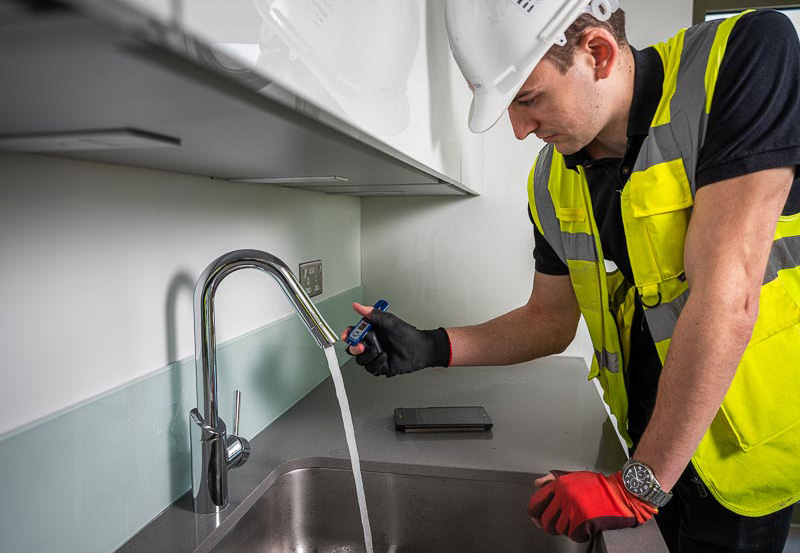
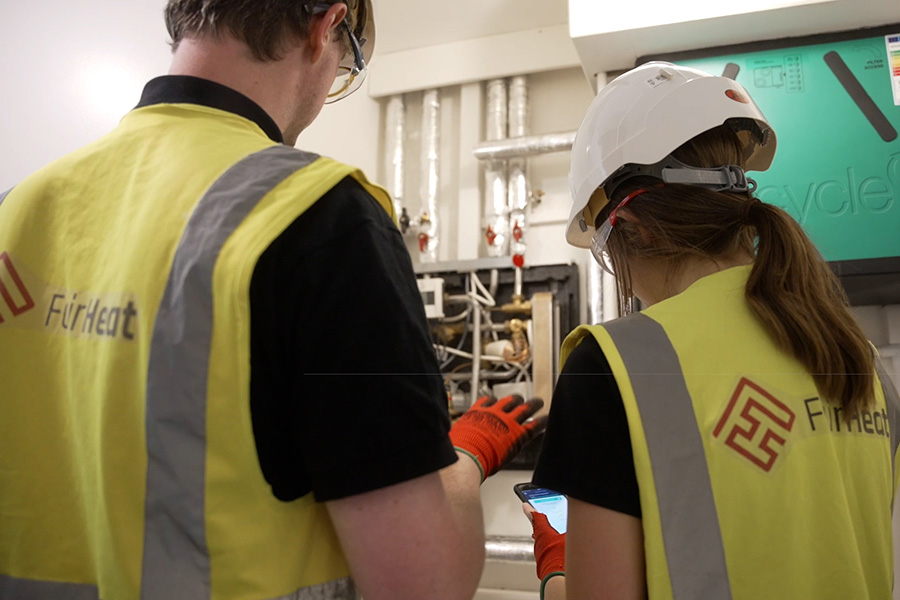
The graph below from Guru Pinpoint shows a well performing dwelling. Flow rate (light blue) is low when the HIU is in standby mode, but when heat is required (when the heating is turned on in the morning) then flow rate rises, the flow temperature (dark blue) hits around 65°C, but return temperatures (green) are low (around 30°C) showing that heat energy is being extracted from the network as it should be. When the heating is turned off, flow rate drops right back down again.
The Lock at Greenford Quay
278 DWELLINGS IN GREENFORD, LONDON
Guru Verify displays detailed results on the web platform, including photos taken during the test. Here, the results to the check ‘Pipe beneath the HIU’ is shown, along with the photo taken by FairHeat’s Acceptance Testing Engineer in the dwelling at the time.
Acceptance testing ensures that the heat network is performing as designed. Data from the energy centre shows that despite varying load across the week (yellow line), flow temperatures (blue line) and return temperatures (green line) sit steadily at around 60°C and 30°C.
Stone Studios
120 DWELLINGS IN HACKNEY WICK, LONDON
FairHeat used Guru Verify to deliver Acceptance Testing across 100% of the dwellings on site.
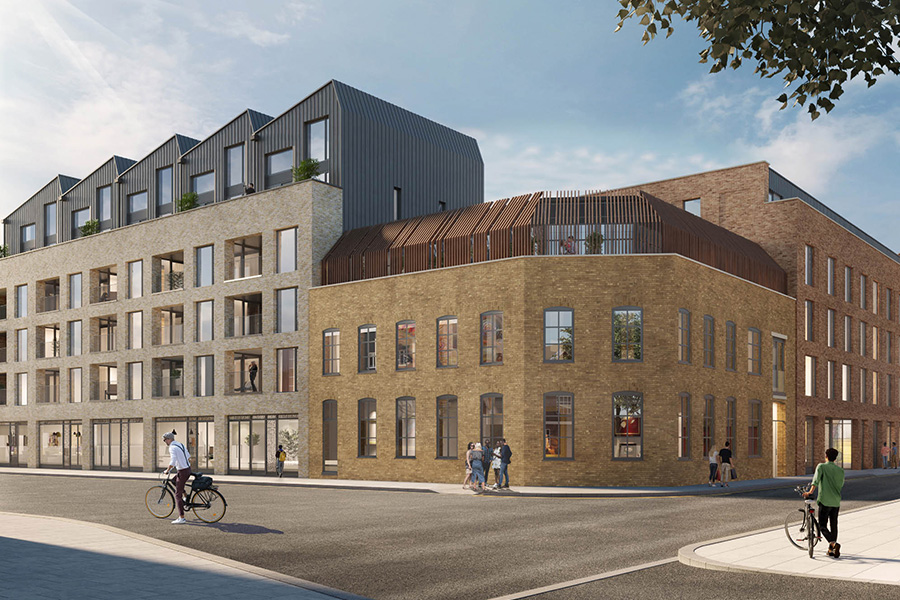

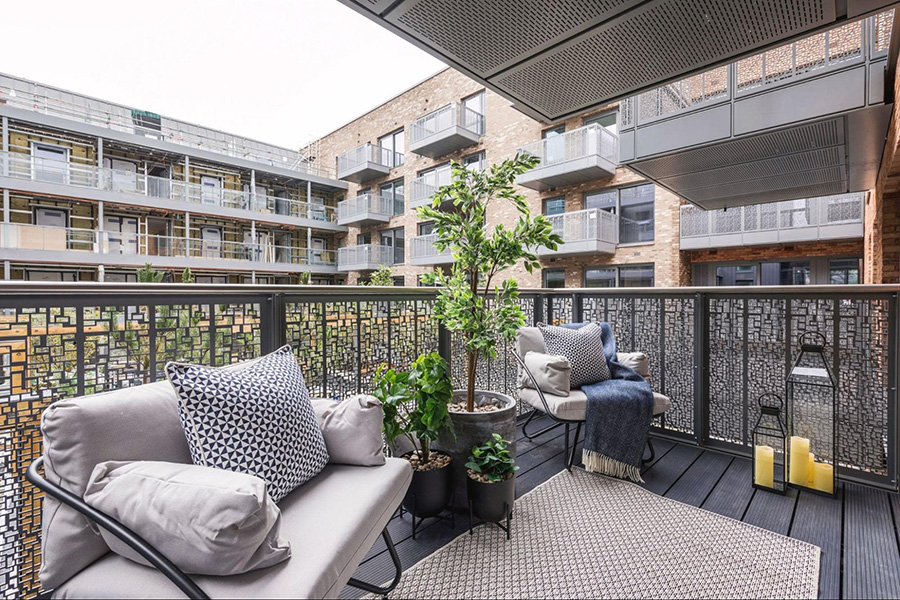
The graph below shows a day in the life of one dwelling on the Stone Studios network. Although it might look chaotic, this is what a well performing dwelling looks like. When heat is demanded, flow rate (in light blue) increases, and the delta T – the difference between flow temperature (in dark blue) and the return temperature (in green) – is very large. At a given flow rate, the larger the delta T, the more heat energy is being extracted from the heat network, and the cooler the water returning to the energy centre is.
What is Acceptance Testing?
Heat networks consultancy FairHeat describe Acceptance Testing as ‘rigorous testing to verify dwelling performance by ensuring the installation, commissioning and operation are as per the design and performance specification’.
CP1 2020 details Acceptance Testing in Objective 5.7: To carry out on-site acceptance tests to deliver an efficient and reliable service.
The acceptance testing process is then described as:
“Independent acceptance testing shall be carried out on the first 10% installed, then, if they pass, a randomised 10% sample of the remainder. If any of the first 10% tests fail to meet the requirements then acceptance testing shall continue on the next 10%, and so on.”
This means that the minimum standard is to carry out acceptance testing on 20% of dwellings (assuming they all pass).
Although best practice point BP5.7a states that, “best practice is to carry out independent acceptance testing on 100% of dwellings”.
Why Acceptance Test 100% of dwellings?
It only takes one poorly performing HIU to throw off a heat network. When performing well, an HIU might see four litres of water pass through every hour, however when settings are wrong, this could be as high as 400 litres per hour.
If, for example, you had 100 HIUs on a network, and 99 HIUs were performing well, but one was performing very badly, the amount of high temperature water running through that one HIU could be more than the rest of the other HIUs combined. This would flood the energy centre with lots of hot water, increasing the volume weighted average return temperature and reducing performance.




